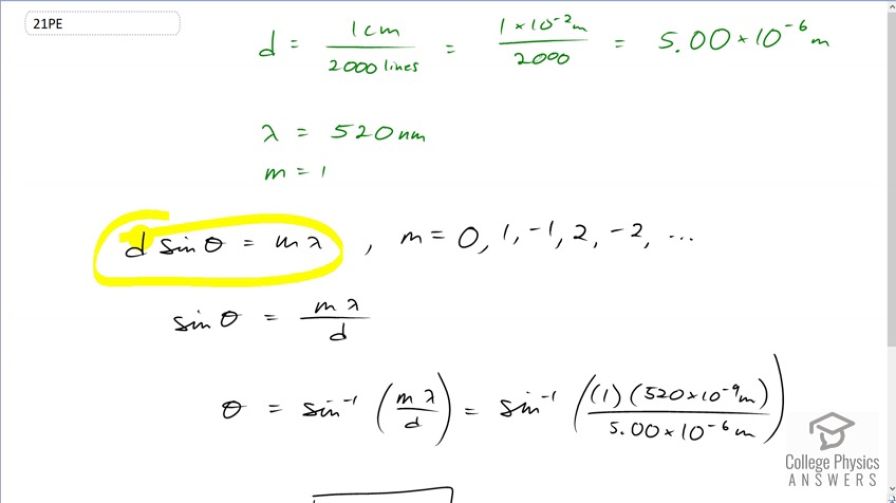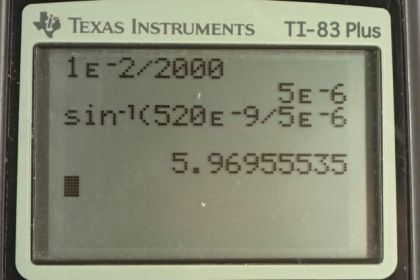Solution video
OpenStax College Physics, Chapter 27, Problem 21 (Problems & Exercises)

Calculator Screenshots
Comments
Why does 1/2000 lines per cm end up gaining significant figures? Why is it 5.00 x 10^-6 ?
Shouldn’t it just be 5x10^-6 ?
Why does 1/2000 lines per cm end up gaining significant figures? Why is it 5.00 x 10^-6 ?
Shouldn’t it just be 5x10^-6 ?
Hi torihall,
Thank you for the question. I see where you're coming from. It's quite right that "2000" (and 1/2000 for that matter) should be seen as having only 1 significant figure, normally. In this particular situation, however, I'm interpreting "2000" as being a discrete counting number, rather than a measurement on a continuum. For example, if you had to count the number of rocks you picked up off the ground, there wouldn't be any error in the result of your counting. If you picked up 30 rocks, you would have precisely 30 rocks, with 2 significant figures. I'm presuming that the manufacturer of the diffraction grating is capable of counting precisely the number of lines in a centimeter on the grating. This isn't being measured in the laboratory.
Hope this helps,
Shaun


